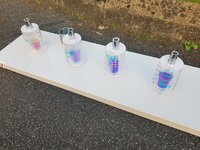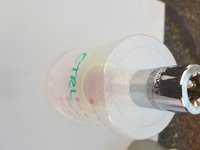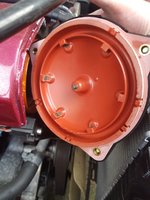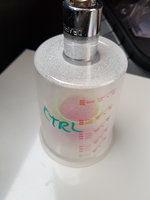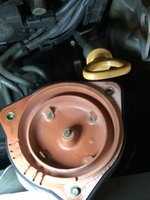It did, but only on a temporary basis. I use this SL500 for about ten days every three months or so.
I thought I would be clever and take off and inspect the caps before using the car during our last UK trip about two weeks ago.
They appeared bone dry, but to be sure, I wiped them with a dry paper kitchen towel.
We drove two miles to a supermarket for shopping. Returning to the car it wouldn't start. I took off the dist caps, and they were full of moisture!!!!!
Where the hell does it come from?
..................
Update:
In England now, and the same problem. The car started after two weeks away, I drove for around two miles and parked for half an hour. On returning it would not start, so I removed and dried the dist. caps which were moisturised
Back at the house, I stripped one of the distributors for examination.
The oil seal OK with no trace of oil leaking.
The large 70mm. orange O ring was intact with no cracks or splits, albeit a little tired looking. Next time we are over to England, I'll bring two new O rings to try.
At the bottom of each distributor cap are a series of what appear like saw cuts, presumably this is to let any moisture out??? Conversely, maybe this is where moist air is getting in???
....................
I cleaned & wiped dry and replace (reuse) the O ring, ever since then the problem has not come back.
On mine moisture will go away as engine gets warmed up. If I drive the car on daily basis, this does not happen. It happens only when if I let the car sits > 3 days.
....................
Hi i have a 1991 h 500 SL with this problem at the moment,i bought 2 new bosch distributor caps from main dealer and 2 new o rings,the problem is still apparent but not as bad.Behind the distributor caps there is another plastic shield shaped like a cerial bowl with a hole through the middel for the rotor arm shaft to pass this doesnt appear to have any gaskets at all and seams to just rely on a good fit against the end of the cam housing,i am going to go into the dealers and get them to pull the diagram up for this and see if there should be a gasket i bet the moisture is finding its way past this from behind.
....................
My UK SL500 is not as far north as Yorkshire, but the moisture just keeps coming back.
....................
Looking up about M119 engines, it is a common problem depending on where the car is situated.
....................
I have just been into MB about the possible seal for the bowl shaped thingy with a hole through the middel that sits behind the rotor arm (technical term lol) there is a picture on perma link 4 of this,MB says there never was a seal there so once i got back home this is what i have done:
1. Remove both distributor caps
2. Remove both rotor arms
3. Remove machined aluminium mounts for rotor arms
4. Remove the bowl shaped cover as on perma link 4. Upon removal of this as i thought full of condensation behind it which can only becoming from down the side of the distributor cap and then in between the bowl shaped cover and cam shaft housing end,up the middle hole and in to the distributor.
Cure(fingers crossed):
1. Thouroughly clean all the removed components and end of cam shaft housing of muck and condensation.
2. Run a bead of high temperature gasket sealant around the bottom lip of the bowl circumference and replace.
3. replace rotor arm mounting and rotor arm.
4. Remove O ring from bowl shaped cover and replace with new BUT, before mounting the new O rings you will see 2 machined groves in the bowl where the O ring sits i can only assume these are for putting a flat object to un lip the O rings to aid in removal, place a bead of the sealant in these groves and mount the new O rings.
5. There are some drain groves in the distributor caps fill these also with the gasket sealant and lastly refit.
Finally solved the moisture in my distributor caps,upon doing the alterations i mentioned in a previous thread i have used the car now for a further 250miles in wet and dry weather,i removed the cap to check and no moisture!!!
....................
I installed new similar sized o-rings and employed "lee2222car"'s fix with the silastic. The moisture has not come back in the last 300 kms so can fully recommend giving it a try.
....................
SO, as suggested it turned out to be my condensation. Tested the car today. Checked the caps before starting the car, they were dry. Ran it for about 5 mins, let it sit 20 mins then tried a start. It did start but rough. So off with the caps and sure enough fine condensation. Hit them with CRC and bang! smooth start and running. So despite the low mileage (the car has done under 40k miles) the interior cap finish does deteriorate.
....................
Yes, thats it. Once the caps heat up with the heads then the condensation disapears. SHort runs (i.e. 5 mins) then an engine switch off for say 10 mins also causes condensation. That was the problem with mine. A short run, come back to the car and it was a no go or badly misfiring
....................
There are factory drilled holes in these distributor caps but they are drilled underneath each cap as they sit in position (perhaps to let moisture out!!)
....................
I have been testing a similar potential fix for around 4 months now, with promising results.
It occurred to me while watching the TV program 'Wheeler Dealers' about 6 months back where they were talking about the two vents in the fog lights of a Range Rover. The upper vent allows water vapour to escape (which is lighter than air), preventing misting up inside the lenses. The lower vent allows flow of air in.
With regard to 'how this happens', I guess that I could add that the moisture vapour gradually builds up over time until there is sufficient concentration inside the cap for a dew point to form as a result of the vapour pressure and temperature differential. I outlined the cycle on a psychometric chart before I cut the holes in my caps just to be sure.
Instead of drilling a hole I cut more slots in the base of the caps.
The original slots are aligned at approx 4.30 and 7.30 on the clock. This is to let ozone escape, which is heavier than 'air'.
I cut additional slots at approx 2 and 10 o'clock to allow the vapour to escape. So far so good. But proof of the pudding will be how it copes through the winter.
....................
Thanks for the helpful info. Interesting that you don't have this problem in desert environ. This suggests that the theory muted in earlier posts concerning humid blowby gases leaking past the cam seals may not be the primary cause, otherwise you would be experiencing problems too. Although its fair to say it could be a contributory factor if the seals are worn out I guess.
I have been looking into this misfire issue for several months (if not years!). Certainly looks like ambient humidity is the main ingredient. Coupled with differential temperatures caused by thermal conduction through dissimilar materials (alloy - very conductive, phenolic resins etc - insulating), thermal convection, vapour drive from hot to cool (direction subject to cooling or heating cycle), partial vapour pressure, and also that some of the resins I believe are hygroscopic. I plotted the cycle on a Mollier diagram and it all points to a dew point on the inside face of the distributor cap. This dew point can occur even with a hot engine, so long as there is sufficient temperature differential and partial vapour pressure. The temp differential only needs to be around 6 to 9 degC for all the other magic ingredients to come together to create the moisture.
It appears that the Designer was Little Bear in this instance, and he managed to create a Goldilocks distributor where 'Everything was just right'... to produce moisture inside the cap!
With hygroscopic resins, like silica gel desiccant, the moisture is adsorbed, not absorbed, and both these materials release their moisture when heated. The point I am getting to is that silica gel would release its moisture when the engine gets warm, which would lead to the same running issues after a short journey, park up and restart. I don't think silica gel is the answer unfortunately.
For the benefit of all reading this: -
Vent the caps.
I would also suggest trying out Beru caps, because I think that their design is more compatible to solving the problem due to fact that they have an added layer of protection - a smooth imide polymer varnish layer inside the cap.




